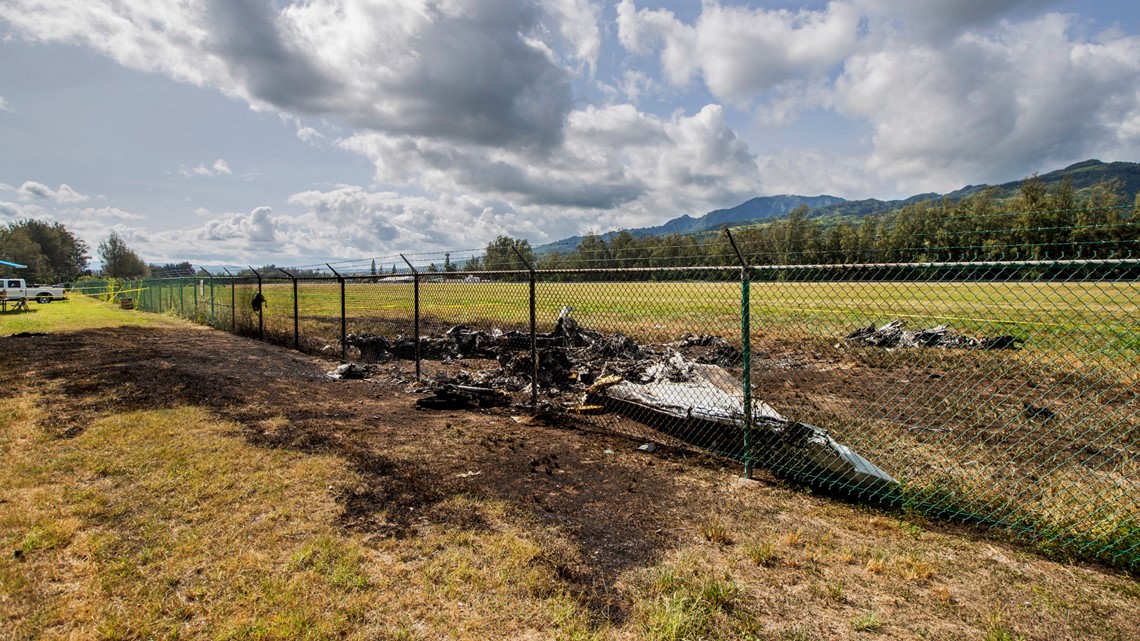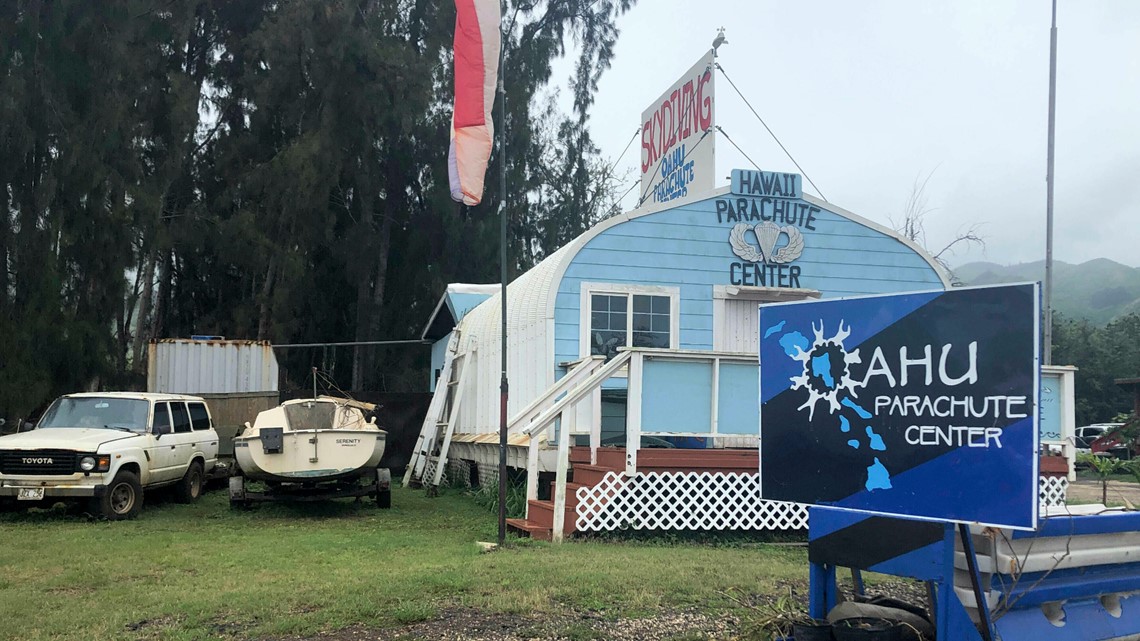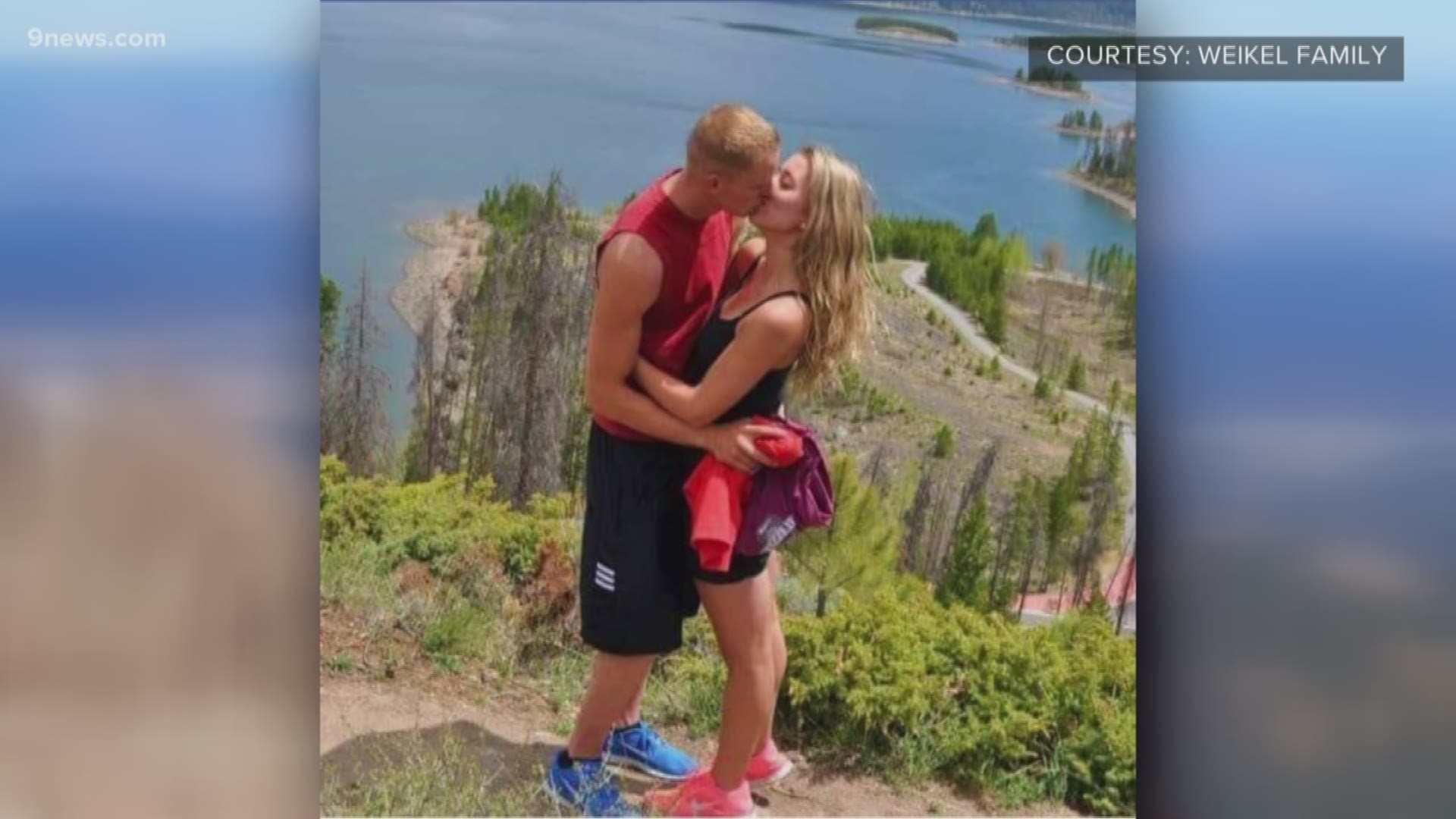HONOLULU — The National Transportation Safety Board says two skydivers made a last-minute decision to board the Hawaii plane that crashed and killed 11 people last month.
The NTSB's preliminary report was released Tuesday. No cause for the crash was given, which is typical for preliminary reports.
"The occupants on the accident flight included the pilot, three tandem parachute instructors and their three customers, and two camera operators," the NTSB report said. "Two solo jumpers decided to join the accident flight at the last minute."
The report also said a witness to the crash reported the plane's engines sounded normal before takeoff, but shortly after it left the ground the aircraft became inverted and crashed nose down. There were no survivors.
"He could hear the engines during the initial ground roll and stated that the sound was normal, consistent with the engines operating at high power," the report said. "He could see its belly, with the top of the cabin facing the ocean to the north. The airplane then struck the ground in a nose-down attitude, and a fireball erupted."
The witness, who is a parachute instructor for the company that was operating the plane, was not named.
The final seconds of the flight were captured by airport surveillance video. An NTSB spokesman said the footage could not be released at this time.


The doomed flight was the fourth of five scheduled skydiving trips for that day. No flight plans were filed, the NTSB said.
It was the deadliest civil aviation accident in the U.S. since a 2011 crash at an air show in Nevada that killed 10 people.
The NTSB report said plane was being operated by Oahu Parachute Center and was owned by N80896 LLC.


The president of that California company, William Garcia, confirmed to The Associated Press that he was the registered owner of the aircraft. His company also owned the airplane when it was in another skydiving accident in California in 2016.
In the immediate aftermath of that crash, the NTSB called on the Federal Aviation Administration to tighten its regulations governing parachute operations.
The NTSB recommended to the FAA more than a decade ago that it strengthen its rules on pilot training, aircraft maintenance and inspection, board member Jennifer Homendy told a news conference in Honolulu.
The FAA hasn't acted on those recommendations, she said.


"Are we trying to put the FAA on notice for this? Yes," Homendy said. "We identified several safety concerns in 2008 with respect to parachute jump operations. Accidents continue to happen. There have been fatalities since that time."
FAA spokesman Ian Gregor said in a statement that safety is the agency's top priority. "The FAA takes NTSB recommendations very seriously, and implemented a number of changes to address recommendations the NTSB made about parachuting operations," the statement said.
The NTSB cited pilot error in the 2016 accident involving the same plane, which went into a spinning nosedive with a group of skydivers on board.
The skydivers were able to jump out of the plane safely, and the pilot recovered and was able to safely land. The aircraft sustained significant damage.
The NTSB investigation said the plane lost a piece of horizontal stabilizer and its elevator broke off. Investigators also concluded the plane was too heavily weighted toward the back, which was also blamed on the pilot.
The aircraft was then repaired before being sent to Oahu and flown again.
"We will be looking at the quality of those repairs and whether it was inspected and whether it was airworthy," the NTSB's Homendy said after the crash.
___
Associated Press writer Jennifer Sinco Kelleher contributed to this report.

